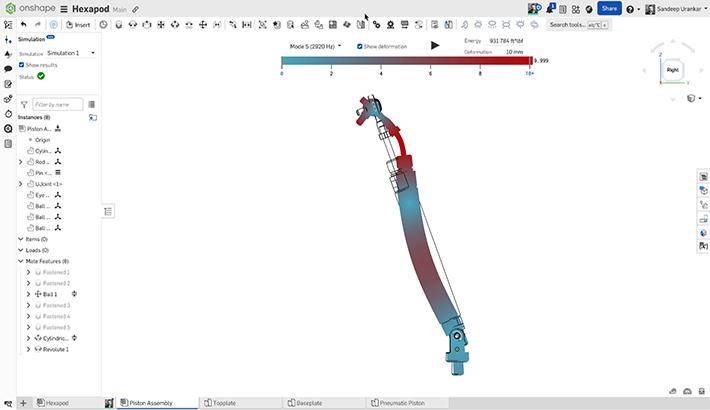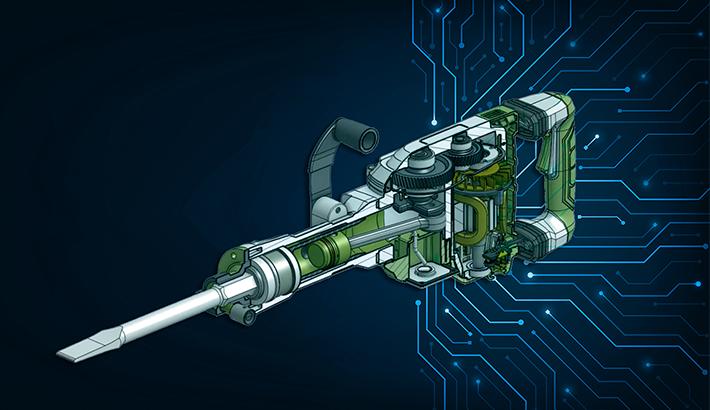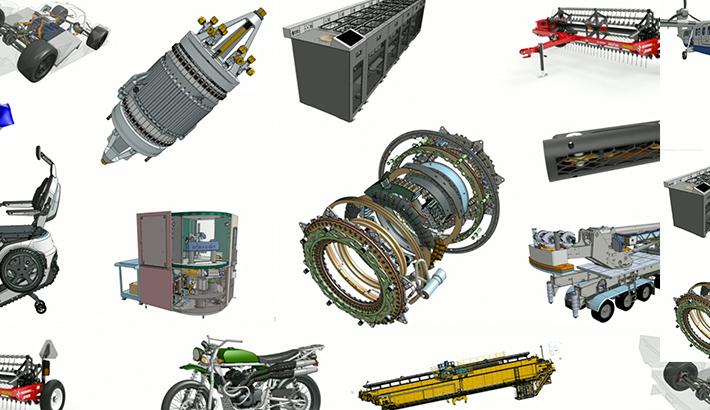
03:49
This blog was originally published on March 14, 2016.
Onshape runs on pretty much anything. As long as an approved web browser is available for that operating system and hardware platform, you can choose whichever combination suits your needs and, of course, your budget.
Choosing the best laptop for traditional CAD is all about CPU, GPU, RAM, and Disk —the bigger you can afford, the better.
However, average CPU speeds have started to plateau over the last few years, so you won’t see much improvement in speed next time you upgrade your hardware to try and make your CAD run faster.
Although more RAM and better graphics cards do have an effect on the performance of your web browser, and therefore Onshape, gone are the days when you need a $2,000 laptop with 32GB of RAM, a 4GB graphics card, and a power supply the size and weight of a house brick, just to run your 3D CAD software.
Being cloud-native CAD, you would expect Onshape to be heavily reliant on internet speed. Onshape only transfers small packets of data between our servers and your browser and then only a fraction of the data that makes up a complete Document, so data usage is really efficient.
A stable, low latency connection gives you the best performance, so you don’t need blazing-fast internet to use it. Plus, because all the modeling operations and large Document handling are done on our servers, you don’t need a blazing-fast computer with mega resources.
So, which platform should you choose?
Choosing the Best Laptop for CAD
My kids are always asking to borrow my laptop to do homework or to get their daily dose of YouTube (in fact, most of the time, I have to ask them if I can use it). So, I decided it was time to put my hand in my pocket and fork out for a device they could use that wouldn’t be overkill for what they needed and, yes, wouldn’t be too expensive.
After a little research, I decided that the best option would be a Chromebook, which would allow them to do all the surfing they want but not allow them to download and install software. But which one should I choose? There are so many. And such a wide range of prices.
A more expensive device like a Google Pixel is going to be the best, but as with all device choices, you should choose which one best suits your needs (and the kids certainly don’t need that much power). So, I decided that for their first device, the lower end of the price range would be sufficient. Two devices caught my eye, both from HP — the 11-inch N1A81EA for £150 (about $215) and the 14-inch K3X08EA for £160 (about $230) - both having a specification similar to other devices which are £40-£50 more but from other manufacturers. I chose the 14-inch version for screen size and also because it has an NVIDIA Tegra K1 processor, which is supposed to have better onboard graphics.
CAD on Chromebook Unboxing
I never really understood “unboxing” videos on YouTube, where people like to watch strangers unwrap new products on camera and provide rambling commentary. They have these videos for Legos, baseball cards, video games, clothing, and even Japanese candy.
So, I thought I’d make my own CAD Unboxing video to see what all the fuss is about! The video below is my experiment to see how long it takes to go from fully boxed to building 3D parts in Onshape on a Chromebook.
From power on to 3D CAD in less than 90 seconds.
My video shows in real time, with no pauses or edits. That means that I went from opening the Chromebook box to spinning around my Onshape model in less than 6 minutes – and the first 2:40 was spent opening cardboard and removing plastic and foam packaging!
This “review” is a true reflection of my own personal experience with a device from the lower end of the price spectrum. Make sure whatever device you buy to run Onshape meets all of your own requirements, especially if you're in the market for the best laptop for CAD. If I have one regret regarding my choice, it would be the screen. For another £100, I could have gotten a Chromebook with a Full HD IPS screen, but then you’re in the realms of a reasonably priced Windows laptop.
As Neo says in The Matrix, “The problem is choice.”
Since recording the video, this Chromebook has really grown on me. It’s clearly not as powerful as my Macbook, but if I need to check email, read the Onshape Forums, or tweak a few dimensions in Onshape, then it has become my go-to device. Would I use it for large assembly modeling? Probably not, but the beauty of Onshape is that you can walk into your local computer retailer and try it out using your own Documents on every device in the store.
The Onshape Discovery Program
Learn how qualified CAD professionals can get Onshape Professional for up to 6 months – at no cost!
Latest Content

- Case Study
- Industrial Equipment & Machine Design
Reframe Systems: Transforming Homebuilding with Digital Automation and Cloud-Native Onshape
09.25.2025 learn more
- Blog
- Becoming an Expert
- Assemblies
- Simulation
Mastering Kinematics: A Deeper Dive into Onshape Assemblies, Mates, and Simulation
12.11.2025 learn more
- Blog
- Evaluating Onshape
- Learning Center
AI in CAD: How Onshape Makes Intelligence Part of Your Daily Workflow
12.10.2025 learn more
- Blog
- Evaluating Onshape
- Assemblies
- Drawings
- Features
- Parts
- Sketches
- Branching & Merging
- Release Management
- Documents
- Collaboration
Onshape Explained: 17 Features That Define Cloud-Native CAD
12.05.2025 learn more



